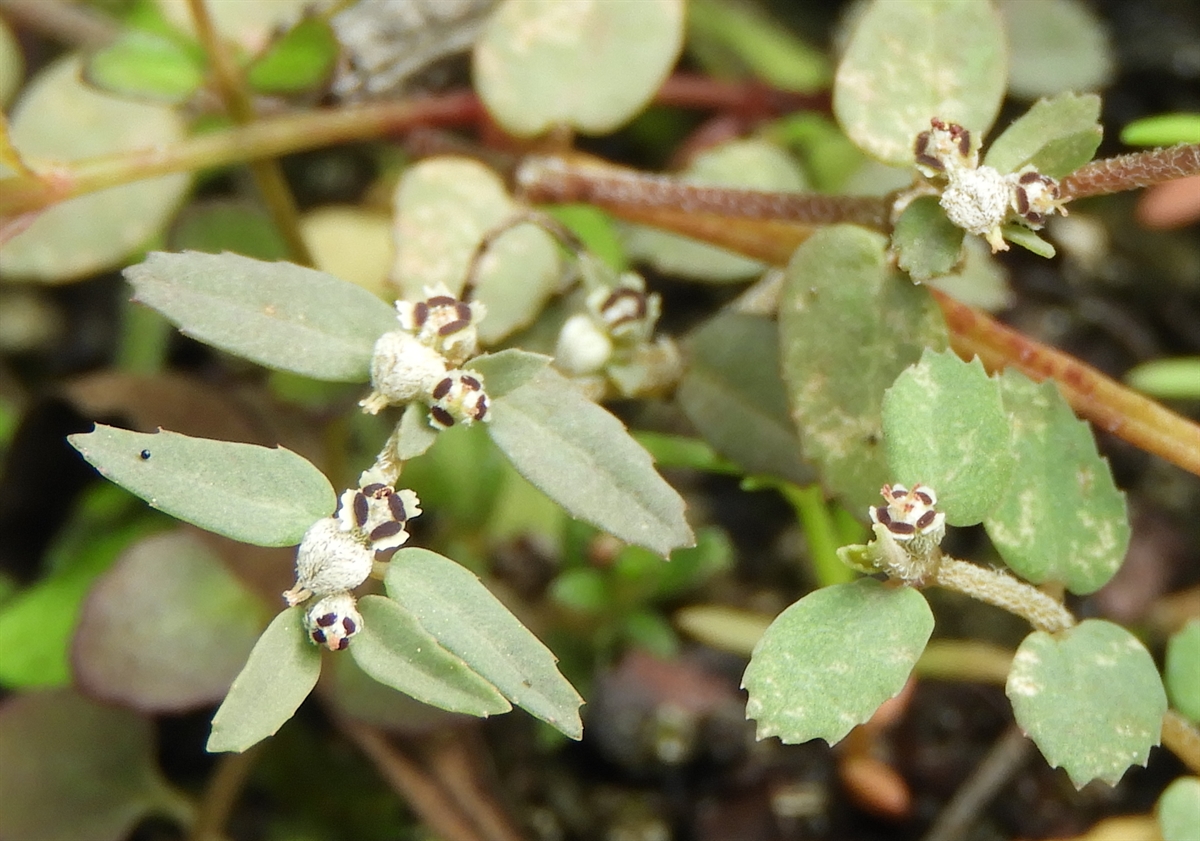Habit: Euphorbia proctorii grows as an annual herb to 10 cm in height creeping to form mats. The grey-green leaves are arranged oppositely, ovate to elliptic, to 8 mm in length with a rounded/acute leaf apex, with the upper portion of the leaves toothed. At the base of the petiole are short lived triangular stipules. The vegetation produces a thick, milky sap. The stems and petioles reddish colored and pubescent.
The incomplete, imperfect, monoecious, actinomorphic, flowers are arranged in cyathia and occur in the axils of leaves. There are 5 dark brown/red, rectangular glands on the edge of the cyathia. There is no calyx or corolla. Staminate flowers are reduced to a single stamen. Carpellate flowers are reduced to a single superior carpel, each with 3 locules and numerous seeds. The fruit is a pubescent capsule at maturity that splits along 3 suture lines.
Habitat: Euphorbia proctorii grows in sandy areas.
Distribution: Euphorbia proctorii is a single island grouping endemic occurring on Great Inagua and potentially Little Inagua.
Medicinal/Cultural/Economic usage: Euphorbia proctorii is not used medicinally in the Lucayan Archipelago.
All parts of the species are extremely toxic and should not be ingested!!

